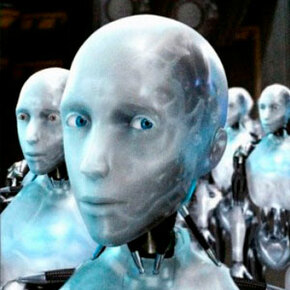
30 Historical Pics That Might Teach You Something New Today, As Shared By This Facebook Page
There are many epic moments in history that are not recorded in the history books. However, some of those lesser-known historical facts are stored in the form of pictures.
The Instagram account History Defined shares interesting photos that shed a light upon the rarely-seen moments from the past. And if you are a history lover, you might enjoy these little snippets of information that are provided along with the fascinating photos. Check out some of their best posts in the gallery below.
More info: Instagram
#1 In 1912, Jim Thorpe, A Native American, Had His Running Shoes Stolen On The Morning Of His Olympic Track And Field Events.

Image source: historydefined
He found this mismatched pair of shoes in the garbage and ran in them to win two Olympic gold medals that day.
He was also the first Native American to win a gold medal for the United States.
#2 Three Jewish Men Who All Survived The Auschwitz Concentration Camp And Were Liberated On The Same Day, Reunite 73 Years Later, 2019

Image source: historydefined
All these men survived the camp and their tattoos have the difference of the number 10, meaning they were all in the camp at the same time. All these men went onto have families and good lives.
#3 Kenyan Runner Abel Mutai Was Only A Few Meters From The Finish Line, But Got Confused With The Signs And Stopped, Thinking He Had Finished The Race

Image source: historydefined
A Spanish man, Ivan Fernandez, was right behind him and, realizing what was going on started shouting to the Kenyan to keep running. Mutai did not know Spanish and did not understand. Realizing what was going on, Ivan Fernandez pushed Mutai to victory.
A reporter asked Ivan, “Why did you do this?” Ivan replied
My dream is that one day we can have some sort of community life where we push ourselves and help each other win.” The reporter insisted “But why did you let the Kenyan win?” Ivan replied, “I didn’t let him win, he was going to win. The race was his.”
The reporter insisted and asked again, “But you could have won!” Ivan looked at him and replied: “But what would be the merit of my victory? What would be the honor of this medal? What would my Mother think of it?”
#4 Members Of The Polish Resistance During World War 2, Then To Now. The Polish Resistance Played A Major Role In The Warsaw Polish Uprising 1944

Image source: historydefined
Polish Warsaw Uprising participants, AK on their shoulders standing for Armia Krajowa (Polish army). Polish Warsaw Uprising started 1st August 1944, lasted 63 days, 18 thousand Polish soldiers and 200 thousand of civilians were killed, some in mass murders.Then the city was distroyed, burnt down methodically by German troops with Soviet army waiting on the other bank of the Wisla river, waiting for them to finish up.
#5 Arnold Schwarzenegger With Wilt Chamberlain And Andrè The Giant On The Set Of Conan The Destroyer, 1983

Image source: historydefined
#6 The 15 Year Old Girl Who Remained Frozen On Top Of A Mountain For 500 Years, 2007

Image source: historydefined
#7 This Is Shavarsh Karapetyan, A Retired Armenian Swimmer.

Image source: historydefined
In 1976, he had just completed a 26 km (16 mile) run when he heard a loud crash. A trolleybus had lost control and had fallen into a reservoir. It was 25 meters (82 ft) off-shore and had sunk to a depth of 10 meters (33 ft).
Karapetyan immediately dived into the sewage-infested waters and managed to kick the back window of the trolleybus with his legs, despite zero visibility from the silt that had risen from the bottom. Of the 92 passengers onboard, Karapetyan pulled out 46 people. 20 of whom survived.
The combination of cold water and the multiple lacerations from glass shards led him to be hospitalized for 45 days. He developed pneumonia and sepsis. While he was able to recover, damage to his lungs prevented him from continuing his career as a swimmer.
“I knew that I could only save so many lives, I was afraid to make a mistake. It was so dark down there that I could barely see anything. One of my dives, I accidentally grabbed a seat instead of a passenger. I could have saved a life instead. That seat still haunts me in my nightmares,” he said.
In 1985, Karapetyan came upon a burning building with trapped people inside. He rushed in and began pulling people out. He was badly burnt and had to once again be hospitalized.
Later in life, he moved to Moscow and founded a shoe company called “Second Breath”. He is still alive today and continues to run his business.
#8 In 1996, Binti Jua, An 8-Year-Old Female Western Lowland Gorilla, Tended To A 3-Year-Old Boy Who Had Fallen Into Her Enclosure At The Brookfield Zoo In Illinois

Image source: historydefined
The child had climbed the wall and fallen 24 feet (7.3m), breaking his hand and receiving a large gash on his face. Binti walked over and cradled the boy in her arms. She carried him over to the service entrance and handed him over to her zookeepers. Her 17-month old baby, Koola, clutched her back throughout the whole ordeal.
For many months after the incident, Binti received special treats and food from her caretakers and drew in huge crowds. She is still alive today at 33-years-old and has three granddaughters and one great-grandson.
#9 In 1996, A Newborn Baby Girl Was Left In A Garbage Can Near The City Of Kolkata, India. Three Friendly Street Dogs Discovered And Protected Her For Nearly Two Days, Even Attempting To Feed The Child Before Authorities Were Contacted And The Young One Was Saved

Image source: historydefined
#10 Meet Margaret Hamilton, The Woman Who Took Mankind To The Moon. She Is Standing Beside The Code She Created To Program The Computer Systems On The Apollo 11 Spacecraft, 1969

Image source: historydefined
Hamilton created the basic concept of modern-day software and her programming was so successful and effective that it was just as important as the astronauts aboard the spacecraft itself. After getting her degree in mathematics she is considered to be the first software engineer, a term which she created.
Despite her role being one of the most important in the entire apollo mission, she was not credited as much as she should have been.
Before she worked for NASA, she programmed software for the US airforce to detect enemy aircraft. She also made software for tracking satellites and to predict the weather.
She took mankind to the moon and back.
Fun fact: the device you are using to view this post (most likely a smartphone) has over a million times more computer power than the spacecraft that took us to the moon. Let that sink in what kind of computer power you are currently holding in your hand!
#11 Albina Mali-Hočevar Was A Slovenian Fighter Who Was Wounded In Combat Several Times During Ww2

Image source: historydefined
She joined the People’s Liberation Movement at 16.
She was wounded twice at 17.
She was wounded again by an exploding mine three days after her 18th birthday.
She continued fighting and working as a nurse for the rest of the war.
She lived until the age of 75.
#12 A Train Of Jewish Prisoners Intercepted By Allied Forces.

Image source: historydefined
In this photo, they then realized that the train would not be heading to a Concentration Camp, they had been liberated.
Taken on April of 1945, by Major Clarence Benjamin.
#13 A Father Looking For His Two Missing Sons That Went Missing During The War, Mitrovica, Kosovo, 1999

Image source: historydefined
Mustafa Xaja, shows two of his sons photos who he fears were killed by Serbs, he had just recently been released from a Serbian prison, and was forced to cross over the border with Albania. Later, he found out his sons were safe.
#14 The Lady Circled In Red Was Lucy Higgs Nichols. She Was Born Into Slavery In Tennessee, But During The Civil War She Managed To Escape And Found Her Way To 23rd Indiana Infantry Regiment Which Was Encamped Nearby. She Stayed With The Regiment And Worked As A Nurse Throughout The War

Image source: historydefined
After the war, she moved north with the regiment and settled in Indiana, where she found work with some of the veterans of the 23rd. She applied for a pension after Congress passed the Army Nurses Pension Act of 1892 which allowed Civil War nurses to draw pensions for their service.
The War Department had no record of her, so her pension was denied. Fifty-five surviving veterans of the 23rd petitioned Congress for the pension they felt she had rightfully earned, and it was granted.
The photograph shows Nichols and other veterans of the Indiana regiment at a reunion in 1898. She died in 1915 and is buried in a cemetery in New Albany, Indiana.
#15 A Couple At Woodstock Only 48 Hours After They Met And The Same Couple 50 Years Later, Happily Still Together

Image source: historydefined
#16 Bobbi Gibb, First Woman To Run The Boston Marathon In 1966, She Ran Without A Number Because Women Were Not Allowed Into The Race

Image source: historydefined
#17 Undine Rising From The Waters (1880) By Chauncey Bradley Ives

Image source: historydefined
“According to medieval lore, undines were Mediterranean sea spirits who lived as soulless mortals. In the nineteenth century, this story gained prominence through Baron Heinrich Karl de la Motte Fouqué’s popular novel Undine, in which a water spirit gains a human form and soul by marrying the mortal knight she loves. When her husband proves unfaithful, the laws of the water spirits force her to kill him. Chauncey Bradley Ives depicts the moment when the mournful Undine, cloaked in a white veil, rises like a fountain to claim her husband’s life. Exquisitely rendered, the diaphanous wet drapery is a masterful example of illusionistic carving.” – Yale University Art Gallery
#18 Belgian Coal Miners Crammed In An Elevator At The End Of A Long Day Of Work. 1900

Image source: historydefined
#19 A Teacher Teaching The Physics Of Surfing, California, 1970

Image source: historydefined
#20 Corporal Jackie Was A Baboon In The South African Army During World War I. He Was The Official Mascot Of The 3rd Transvaal Regimen When His Owner, Albert Marr Was Drafted Into War, And Would Not Leave Jackie At Home. He Asked His Superiors If Jackie, Too, Could Join The Army And They Said Yes

Image source: historydefined
“So Jackie was given an official style uniform with a cap, a ration set, and his own pay book. Jackie would salute to superior officers and light soldiers’ cigarettes. He would even stand at ease in the style of a trained soldier.
Due to his heightened senses, Jackie was useful to sentries on duty at night. The baboon would be the first to know when an attack was coming or enemy soldiers were moving around nearby.
Jackie and Marr survived a battle where the casualty rate was 80%, in Delville Wood, early in the Somme Campaign.
When Marr was serving in Egypt he was shot in the shoulder at the Battle of Agagia, 26 February 1916, while Jackie was with him, licking the wound as they awaited help.
Jackie was given his own rations while with the army, and ate them with his own knife and fork, as well as his own washing basin.
When the regiment was drilled and marched, Jackie would be with them.
Jackie spent time in the trenches in France where he tried to build a wall around himself during extreme enemy fire, but a piece of shrapnel from an explosion flew over the wall hitting Jackie in the leg and arm.
When stretcher bearers tried to take Jackie away he refused, desperate to finish his wall and hide. Doctors treated Jackie’s wounds, but they decided his leg had to be amputated and were surprised that he even survived.
Jackie was awarded a Medal of Valor for the event of his injuries, and promoted from private to corporal. After the war was over, Jackie was discharged with papers and went back to South Africa. He tragically died in a house fire in 1921.”
#21 Michelangelo’s Moses Is A Marble Sculpture Made In 1513–15

Image source: historydefined
One of the many details of this masterpiece is one very small muscle in the forearms that contracts only when lifting the pinky, otherwise it is invisible. Moses is lifting the pinky, therefore that tiny muscle is contracted.
Giorgio Vasari in the Life of Michelangelo wrote: “Michelangelo finished the Moses in marble, a statue of five braccia, unequaled by any modern or ancient work. Seated in a serious attitude, he rests with one arm on the tables, and with the other holds his long glossy beard, the hairs, so difficult to render in sculpture, being so soft and downy that it seems as if the iron chisel must have become a brush. The beautiful face, like that of a saint and mighty prince, seems as one regards it to need the veil to cover it, so splendid and shining does it appear, and so well has the artist presented in the marble the divinity with which God had endowed that holy countenance. The draperies fall in graceful folds, the muscles of the arms and bones of the hands are of such beauty and perfection, as are the legs and knees, the feet were adorned with excellent shoes, that Moses may now be called the friend of God more than ever, since God has permitted his body to be prepared for the resurrection before the others by the hand of Michelangelo. The Jews still go every Saturday in troops to visit and adore it as a divine, not a human thing.”
The English translation of Sigmund Freud’s “The Moses of Michelangelo” also provides a basic description of the sculpture: “The Moses of Michelangelo is represented as seated; his body faces forward, his head with its mighty beard looks to the left, his right foot rests on the ground, and his left leg is raised so that only the toes touch the ground. His right arm links the Tables of the Law with something that looks like a book in the right palm of his hand with a portion of his beard; his left arm lies in his lap.”
The attention to detail is impeccable.
#22 A Couple Take A Mirror Selfie Together, 1940s

Image source: historydefined
#23 Lebanon Pre-Civil War, Byblos, 1965. Photo By Raymond Depardon

Image source: historydefined
#24 This Photo Shows Dr. Zbigniew Religa Keeping Watch On The Vital Signs Of A Patient After A 23 Hour Heart Surgery He Conducted In 1987

Image source: historydefined
In the lower right corner, you can see one of his colleagues who helped him with the surgery asleep. Dr. Religa was a pioneer of heart transplantation in Poland, and even though the surgery was considered borderline impossible at the time, he took the chance, and the operation was entirely successful. The patient in the photo would go on to outlive Dr. Religa.
#25 East German Soldier Helps A Little Boy Sneak Across The Berlin Wall The Day It Was Erected In 1961. The Boy Had Been Left Behind In The Chaos Of People Fleeing To Be With Their Families On Either Side Of The Wall

Image source: historydefined
#26 “My Uncle Getting Caught Growing Weed In The Backyard.” – 1970s

Image source: historydefined
#27 Billed As “The Sheep-Headed Men,” “The White Ecuadorian Cannibals Eko And Iko,” And “The Ambassadors From Mars,” George And Willie Muse Were World-Famous Sideshow Performers In The Early 1900s. But Even Their White Audiences Hardly Knew The Horrors Of Their Story

Image source: historydefined
Born Black with a rare form of albinism, they were targeted by a traveling “freak hunter” when they were just boys and kidnapped from their Virginia home. Then they were forced to grow out their hair and sold to a series of traveling sideshows, including Ringling Bros. They weren’t allowed to go to school or learn to read, and they never saw a dime, though their handlers made a fortune off of them. They were even told that their mother was dead so that they would stop begging to go home.
Their years of enslavement finally ended in 1927 when Ringling Bros. found its way back to Roanoke and George recognized their mother in the crowd. “There’s our dear old mother,” he said. “Look, Willie, she is not dead.”
#28 A German Coal Miner Waiting To Get Into The Communal Shower At The End Of A Long Shift, 1958

Image source: historydefined
#29 An Indian Student Studying Late At Night At The University Of Madras In Tamil Nadu, 1905

Image source: historydefined
“Students use to tie their hairs to a nail in the wall to prevent themselves from falling asleep while studying late at night.”
#30 Shirley Slade Was One Of More Than 1000 Women Who Had Been Solicited By The U.S. Government To Enter An Intensive Seven-Month Training Course That Would Make Them The First Female Pilots To Enter The Air Force

Image source: historydefined
“Severe pilot shortages of World War II led to the recruitment of women into the Air Force. By recruiting women, the Air Force could maintain delivery of aircraft, ferry supplies, and perform other non-combative functions that fueled the war efforts.
Collectively, the group would become known as WASPs: Women Airforce Service Pilots.
As the war wound down, men returning from combat took the WASPs’ places as active-duty pilots.
Slade was trained to fly the B-26 and B-39.
Photo of Casey Drabble for Men’s File Magazine.”


















Got wisdom to pour?